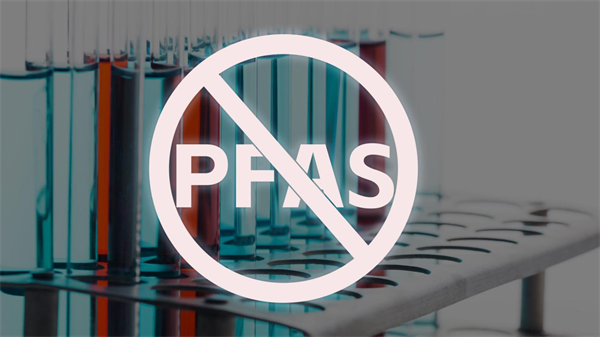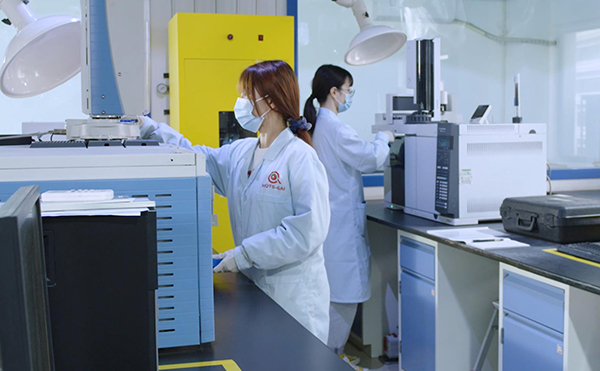Since the beginning of the 20th century, synthetic chemicals have flooded into production and life, greatly guaranteeing the needs of people's livelihood, and profoundly changing the relationship between man and nature. However, the widespread development and use of chemicals, while bringing convenience, also poses a challenge to global sustainable development. PFAS is one of them, and the earliest PFAS contamination event in history should be the dumping of PFOA (perfluorooctanoic acid) by DuPont in Parkersburg, West Virginia, USA. Because PFAS substances have little ability to degrade naturally, they are theoretically still raging around the world today, polluting the environment and quietly endangering human health.
What is PFAS?
Per-and polyfluoroalkyl substances (PFAS or PFASs) are a group of synthetic organofluorine chemical compounds that have multiple fluorine atoms attached to an alkyl chain; there are 7 million such chemicals according to PubChem.
The two most commonly used perfluorinated compounds are perfluorooctanoic acid (PFOA) and perfluorooctane sulfonic acid (PFOS). PFOS belongs to the perfluorosulfonic acids group, and PFOA belongs to the perfluoroboxvlic acids group. PFOS is oil and water resistant, while PFOA is commonly used as a processing aid in the production of high-performance fluoropolymers such as Teflon.
Application of PFAS
PFAS came into use after the invention of Teflon in 1938 to make fluoropolymer coatings and products that resist heat, oil, stains, grease, and water. They are now used in products including waterproof fabric such as Nylon, yoga pants, carpets, shampoo, feminine hygiene products, mobile phone screens, wall paint, furniture, adhesives, food packaging, heat-resistant non-stick cooking surfaces such as Teflon, firefighting foam, and the insulation of electrical wire. PFAS are also used by the cosmetic industry in most cosmetics and personal care products, including lipstick, eye liner, mascara, foundation, concealer, lip balm, blush, and nail polish.

Dangers of PFAS
Current scientific research has shown that exposure to certain levels of PFAS may lead to:
- Reproductive effects such as decreased fertility or increased high blood pressure in pregnant women;
- Developmental effects or delays in children, including low birth weight, accelerated puberty, bone variations, or behavioral changes;
- Increased risk of some cancers, including prostate, kidney, and testicular cancers;
- Reduced ability of the body’s immune system to fight infections, including reduced vaccine response;
- Interference with the body’s natural hormones;
- Increased cholesterol levels and/or risk of obesity.
In recent years, with the deepening of research on PFAS, the health risks caused by PFAS have attracted increasing attention from various countries. Therefore, countries and regions around the world are accelerating the formulation of relevant regulations and policies to strengthen the management and control of PFAS.
EU:
The POPs regulation stipulates limit requirements on PFOS, PFOA, PFHxS, and their salts and related compounds. The REACH regulation stipulates limit requirements on C9-C14 PFCAs, PFHxA and their salts and related compounds, of which the limit requirements for PFHxA is a new regulation in October this year, the EU's control of PFAS is gradually strengthening, has been involved in textiles, footwear, food packaging, electronic appliances and other products.
Australia:
In the《Industrial Chemicals Environmental Management (Register) Amendment (2023 Measures No. 1) Instrument 2023》, Australia stipulates limit requirements on PFHxS, PFOS, PFOA and their salts and related compounds, which are basically consistent with the POPs regulation.
California:
States in the U.S. have successively issued regulations on the control of PFAS, among which California has more detailed limit requirements for the content of PFAS (in terms of total organic fluorine) in the packaging of juvenile product, textiles and plant-based foods.

Influence and countermeasures:
Until November 15, 2024, “California Proposition 65” for PFAS substances issued a total of 196 “60 days notice of violation”. Involving apparel, furniture, cosmetics, disposable sanitary products and other areas, in the face of increasingly stringent global regulation of PFAS, national buyers can take the following strategies to cope:
1. Understand the regulatory developments in each country: Purchasers need to understand the regulatory requirements of PFAS in their own countries in detail, and understanding these regulations can help purchasers avoid non-compliant products in the purchasing process.
2. Choosing alternatives: Buyers need to choose PFAS-free alternatives to meet environmental and health standards and minimize negative impacts on the environment.
3. Supplier Audit: Buyers should conduct strictly audits of their suppliers to ensure that they do not use PFAS in their manufacturing processes or use alternatives that meet environmental standards. Audits can be conducted by third-party testing organizations to ensure that suppliers' products meet international environmental standards.
4. Advance planning: Given the constant changes in PFAS regulation, buyers should plan ahead to avoid supply chain disruptions due to regulatory changes. This can be done by establishing long-term relationships with suppliers to ensure the stability and reliability of the supply chain.
5. Enhance internal training: Enterprises should enhance employee training on PFAS-related regulations to ensure that procurement, production and sales are in strict compliance with the relevant regulations and avoid legal risks caused by improper operation.

Laboratory methods:
At present, the laboratory can do the limit detection of PFAS substances required in EU REACH Appendix 17 and POPs Appendix 1. The test method for perfluorinated compounds refers to EN 17682, where perfluorinated compounds are extracted in an ultrasonic bath with methanol and the extract is analysed by LC-MS/MS or GC-MS/MS; the test method for total fluorine is based on EN 14582. The sample is oxidized by combustion in a closed system (a bomb containing oxygen under pressure). Halogenated compounds are converted to fluoride, which are absorbed and/or dissolved in an absorption solution, and the solution is analyzed by ion chromatography.
Enterprises often face problems such as unclear identification of substances, unclear control requirements and unclear compliance routes when carrying out PFAS control, HQTS-QAI can provide one-stop compliance services for enterprises from source to endpoint in response to the problems faced by enterprises. HQTS-QAI expert team can assist enterprises in identifying PFAS substances in accordance with regulations, provide services including total fluorine/perfluorine screening, target PFAS substance testing, etc. to help enterprises plan compliance routes and ensure global compliance of products.
